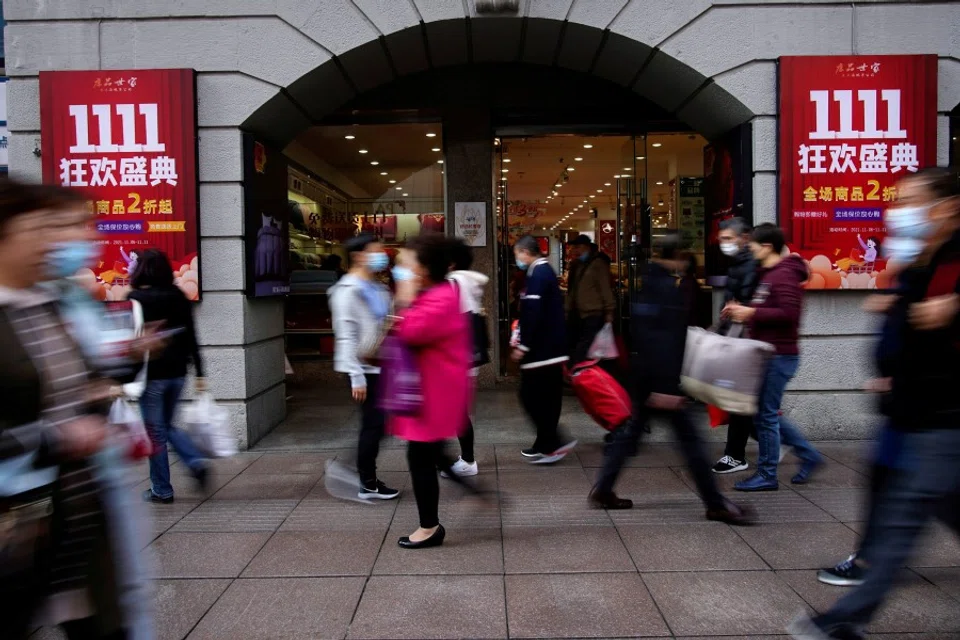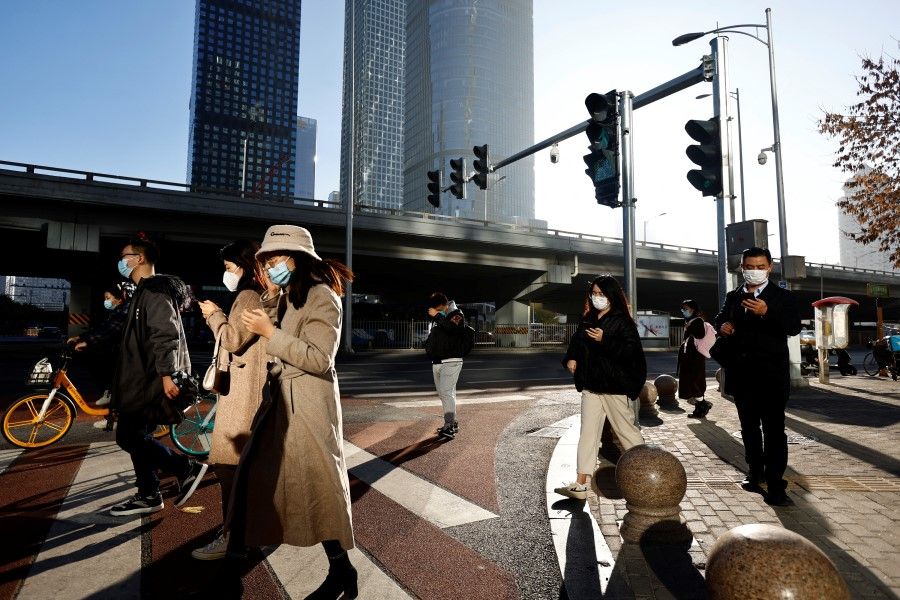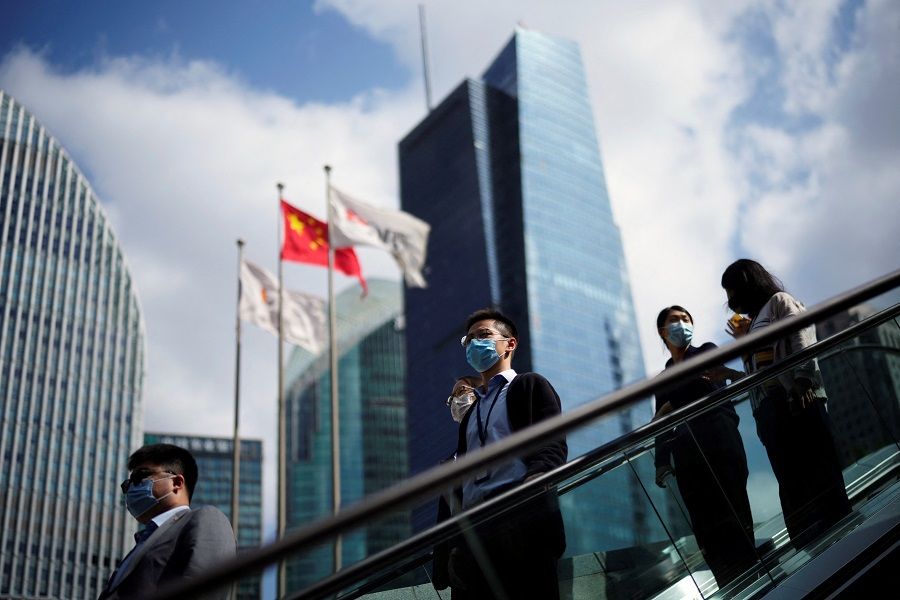China's economic outlook is not bleak

Since the 20th Party Congress of the Chinese Communist Party, the Western world generally believes that China is now prioritising national security over economic growth as the strategic focus in its next phase of development, leading to a worrying outlook of the Chinese economy.
I believe that domestic circulation will account for an increasingly larger part of China's economic operations, while the role of the government will also strengthen. However, this does not mean that the country is moving towards a closed-door policy or planned economy - China's economy still has ample room for growth.
...domestic circulation would inevitably be dominant in a mega economy regardless of ideology.
Resolving issues in domestic circulation
The Chinese government proposed the "dual circulation" strategy in 2020, and its significance was further affirmed in the 20th Party Congress report. German Chancellor Olaf Scholz aptly summarised the general sentiment of the West when he said, "China's 'dual circulation' economic strategy is designed to strengthen the domestic market and reduce dependencies on other countries."
Importantly, domestic circulation would inevitably be dominant in a mega economy regardless of ideology. In the case of the US, its export dependence has long remained below 10%. Its economic strength is built on a highly integrated domestic market where goods, people and information flow freely.

In contrast, China's economic bottleneck stems from the fact that its domestic circulation is not smooth. For instance, amid Covid-19 controls, the various provinces released over 20 health codes, revealing the fragmentation in the factor market. Also, innovation is dependent on a strong national framework, but China's technology companies were prematurely exposed to external circulation amid a lack of cooperation among industry, university and research institutes; hence, there is no real community of innovation.
The 20th Party Congress report mentioned building a unified national market and boosting the effectiveness of China's innovation system, precisely to resolve this issue in domestic circulation.
A highly developed domestic circulation can change how the Chinese economy participates in globalisation. In a model dominated by international circulation, the technology and market that China needs to grow its economy is led by foreign enterprises, while the aim of dual circulation is to unlock the potential of its mega economy, and allow Chinese multinational companies to integrate global resources.
Indeed, industrial economist Liu Zhibiao drew the analogy of dual circulation equating to "the shift from globalisation on the road to globalisation on the home front".
An economy with strong domestic circulation will only open up more, rather than move towards a closed-door policy.
Relationship between innovation and dual circulation
An economy with strong domestic circulation will only open up more, rather than move towards a closed-door policy. The mechanics are complex. Take for example innovation, which is a product of the specialised division of labour. The more China masters key and core technology and achieves self-reliance, the more it needs to actively participate in the international division of labour.

The 20th Party Congress report mentions the need to build an open innovation ecosystem first before achieving self-reliance in innovation capacity, which shows that the Chinese government has a deep understanding of the relationship between innovation and dual circulation.
Another focal point of the Chinese economy following the 20th Party Congress is the relationship between the government and the market. While people generally believe that the country would return to a planned economy, this is not the case. In the 20th Party Congress report, the terms "market" (市场), "private" (民营) and "non-public" (非公有制) appeared 26 times, an increase compared with the 24 times the terms appeared in the 19th Party Congress report.
The 20th Party Congress report also reiterated, "We must unswervingly consolidate and develop the public sector and unswervingly encourage, support, and guide the development of the non-public sector. We will work to see that the market plays the decisive role in resource allocation and that the government better plays its role."
The main challenge of the Chinese economy in the next phase is in overcoming the middle-income trap through innovation-driven development.

I believe that the Chinese government may be attempting to create a new type of division of labour among different ownership entities. The main challenge of the Chinese economy in the next phase is in overcoming the middle-income trap through innovation-driven development.
The further upstream you go in the field of basic research and underlying technology, the greater the uncertainty. Hence, the government will have to play a greater role in these sectors where private enterprises are unwilling to enter.
Different governments will enter the innovation chain in their own ways. The military plays a dominant role in the US and the defence ministry receives about half of the country's research and development funding. Familiar underlying technologies such as the internet, GPS and integrated circuits were all incubated from US military programmes.

China had hoped to obtain underlying technologies and basic research from Europe and the US, but following the China-US decoupling, it can only ramp up on government investments to achieve self-reliance in technology and innovation. As we have already seen, the Chinese government has been planning and working on this. Long before the 20th Party Congress, state-owned enterprises have been positioned as the source of original technologies (原创技术策源地). A large number of officials with experience in aviation and aerospace have also joined the Central Committee at this year's congress, all having made outstanding scientific achievements under China's new "whole-nation system".
Indeed, China's economic outlook is not bleak.
Renewed understanding of the role of private enterprises
Notably, at the downstream end of the innovation chain nearing the sale of goods, only private enterprises that fiercely compete under hard budget constraints can maximise the commercialisation of original technologies.
Prior to the 20th Party Congress, the Chinese government repeatedly warned against the "disorderly expansion of capital". But a milder expression was used in the congress report - "law-based regulation and guidance to promote the healthy development of capital" - perhaps out of a renewed understanding of the role of private enterprises.
Indeed, China's economic outlook is not bleak. Aside from ideological factors, the outside world's negative perception is mainly caused by a lack of confidence due to the long-term epidemic prevention and control measures. I believe that as soon as the pandemic is over and the economy gets back on track, the message of the 20th Party Congress report will receive a more objective understanding.
This article was first published in Lianhe Zaobao as "客观看待二十大后中国经济". Related: China's private sector has continued its rise against all odds | Cooperatives are making a comeback. Is China preparing for combat and famine? | CCP new leadership team's big task: Build market confidence amid zero-Covid | Little certainty: A 'new era' for China's economy | Ten years of political intervention: China's economy at a crossroads | Chinese netizens debate: Should China abandon the market economy for a 'people-oriented' economy?
